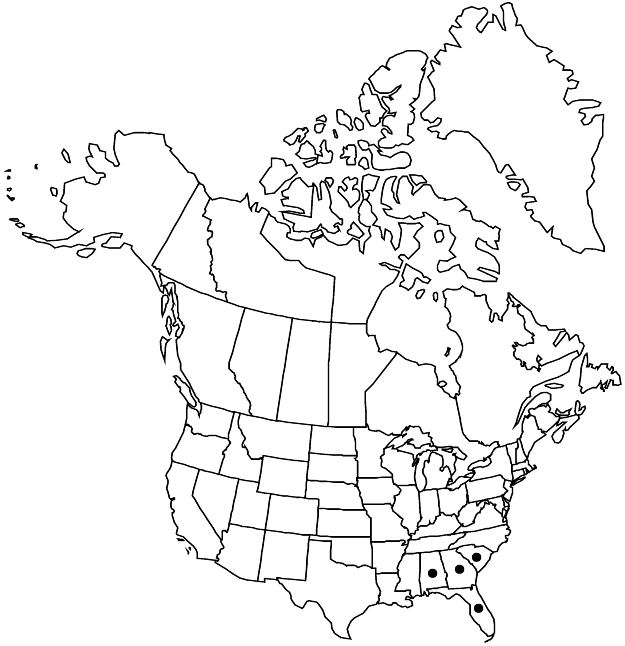Difference between revisions of "Crataegus lassa"
Biltmore Bot. Stud. 1: 29. 1901.
FNA>Volume Importer |
FNA>Volume Importer |
||
| Line 60: | Line 60: | ||
|publication year=1901 | |publication year=1901 | ||
|special status=Endemic;Selected by author to be illustrated | |special status=Endemic;Selected by author to be illustrated | ||
| − | |source xml=https://jpend@bitbucket.org/aafc-mbb/fna-data-curation.git/src/ | + | |source xml=https://jpend@bitbucket.org/aafc-mbb/fna-data-curation.git/src/f6b125a955440c0872999024f038d74684f65921/coarse_grained_fna_xml/V9/V9_1079.xml |
|subfamily=Rosaceae subfam. Amygdaloideae | |subfamily=Rosaceae subfam. Amygdaloideae | ||
|tribe=Rosaceae tribe Gillenieae | |tribe=Rosaceae tribe Gillenieae | ||
Revision as of 21:35, 24 September 2019
Shrubs or trees, 20–50 dm, branches ± weeping. Stems: trunk bark ashy gray, rough or scaly; twigs: new growth densely white-canescent, 1-year old purple-brown or blackish, older dark gray; thorns on twigs absent or rare, straight or slightly recurved, 1-year old blackish or purple-brown, ± stout, 3–4.5 cm. Leaves: petiole length 25–33% blade, winged distally, densely pubescent, glandular; blade obovate-cuneate to narrowly obovate, 2–4 cm (length/width = 1.6–2.1), ± coriaceous (floppy in wind), base gradually tapered, lobes 0 or 2–4 per side, subterminal, toothlike, margins glandular-denticulate to subentire, veins 2–4(or 5) per side (except smaller leaves), apex often strikingly cuspidate, surfaces ± white-pubescent young, especially on abaxial veins, glabrescent. Inflorescences 3–5-flowered; branches tomentose; bracteoles linear, margins glandular. Flowers 15–20 mm diam.; hypanthium tomentose; sepals narrowly triangular, 6–8 mm, margins finely glandular-serrate, abaxially ± tomentose, especially proximally; anthers cream or ivory; styles 3–5. Pomes yellow blushed red to orange-red, suborbicular, (8–)10–12 mm diam., pubescent; sepals spreading-recurved or lost; pyrenes 3–5.
Phenology: Flowering Mar–mid Apr; fruiting Jul–Aug.
Habitat: Sand plains, dry scrub, open woodlands
Elevation: 0–100 m
Distribution

Ala., Fla., Ga., S.C.
Discussion
Crataegus lassa is particularly abundant around its type locality of Selma, Alabama. The species normally has big, floppy leaves. The type material has rather shorter leaves than most specimens seen commonly near Selma today and is notable for having a few small terminal lobes. Crataegus illudens is barely different but has somewhat longer leaves and leaf tips more often entire. Crataegus panda is a form with a slightly shorter and relatively wider leaf, minutely crenate on the margins; also see the discussion under 144. C. lanata.
Selected References
None.
